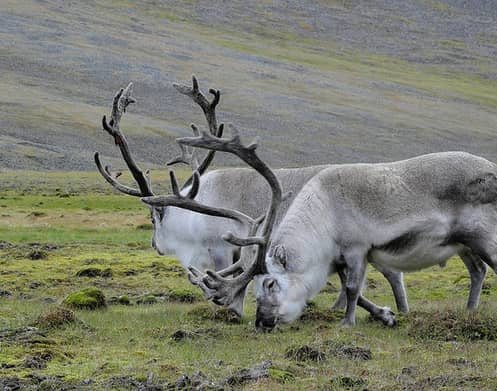Neolithic Hunting Gear Found in Norwegian Glacier
OutdoorHub Reporters 10.03.13

Near the old viking capital of Trondheim, Norway, researchers have unearthed an ancient longbow, a hunter’s tunic, and a set of five arrows. The gear was revealed after layers of snow covering them melted away. According to the BBC, the thick hunting tunic was found in the Lendbreen glacier and is believed to 1,700 years old. The bow and arrows, discovered by archaeologist Martin Callanan in the nearby Trollheim and Dovre Mountains, could be much older.
“These are unique finds, they are a signal that something is changing up there,” Callahan told the BBC. “As snow patches are starting to melt, people are finding archaeological artifacts in all sorts of different places and they are often quite well preserved.”
Callanan later told Livescience that he and colleagues from the Norwegian University of Science and Technology, where he works, would often spend summers in the mountains to record snow melt. Sometimes interesting gems are hidden underneath the snow cover, and Callanan’s most recent find is also his largest. These neolithic artifacts come from the end of the Stone Age and are extremely well-preserved. Later testing showed that the bow was roughly 3,800 years old and that the oldest of the arrows could have been shot 5,400 years ago. Callanan said it is likely the ancient hunters ventured into the mountains in search of big game like reindeer.
Frigid temperatures meant that these early hunters had to bring thicker and warmer clothing into the mountains. The tunic found on the Lendbreen glacier was made much more recently than Callanan’s find and made with more advanced techniques. Believed to have been constructed from a lamb’s wool, researchers say it resembled an early sweater that allowed hunters to endure extended periods in the field.
“The Lendbreen tunic is a first glimpse of the kind of warm clothing used by hunters frequenting the ice patches of Scandinavia in pursuit of reindeer,” said Marianne Vedeler of the Univeristy of Oslo, who studied the garment. “It had no buttons or fastenings, but was simply drawn over the head like a sweater.”
Although drawn from different points in history, the artifacts show that for a long period of time hunters favored the region for predictable, if hard-earned, harvests. Reindeer and other large game animals were drawn to the mountains during the heat of summer to cool off in the snow. This allowed skilled hunters easy access to a highly renewable food source.
Callanan’s findings were reported in the latest issue of the journal Antiquity.

